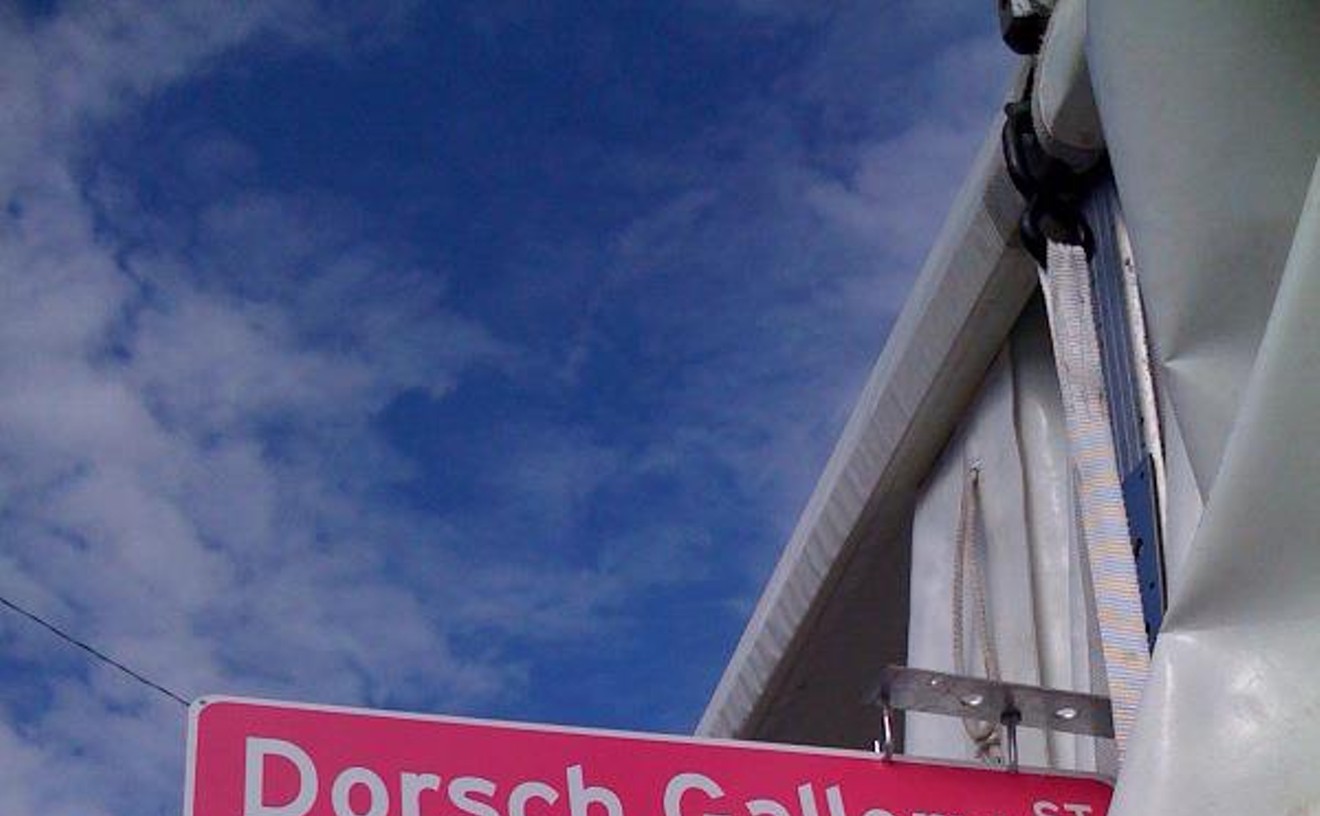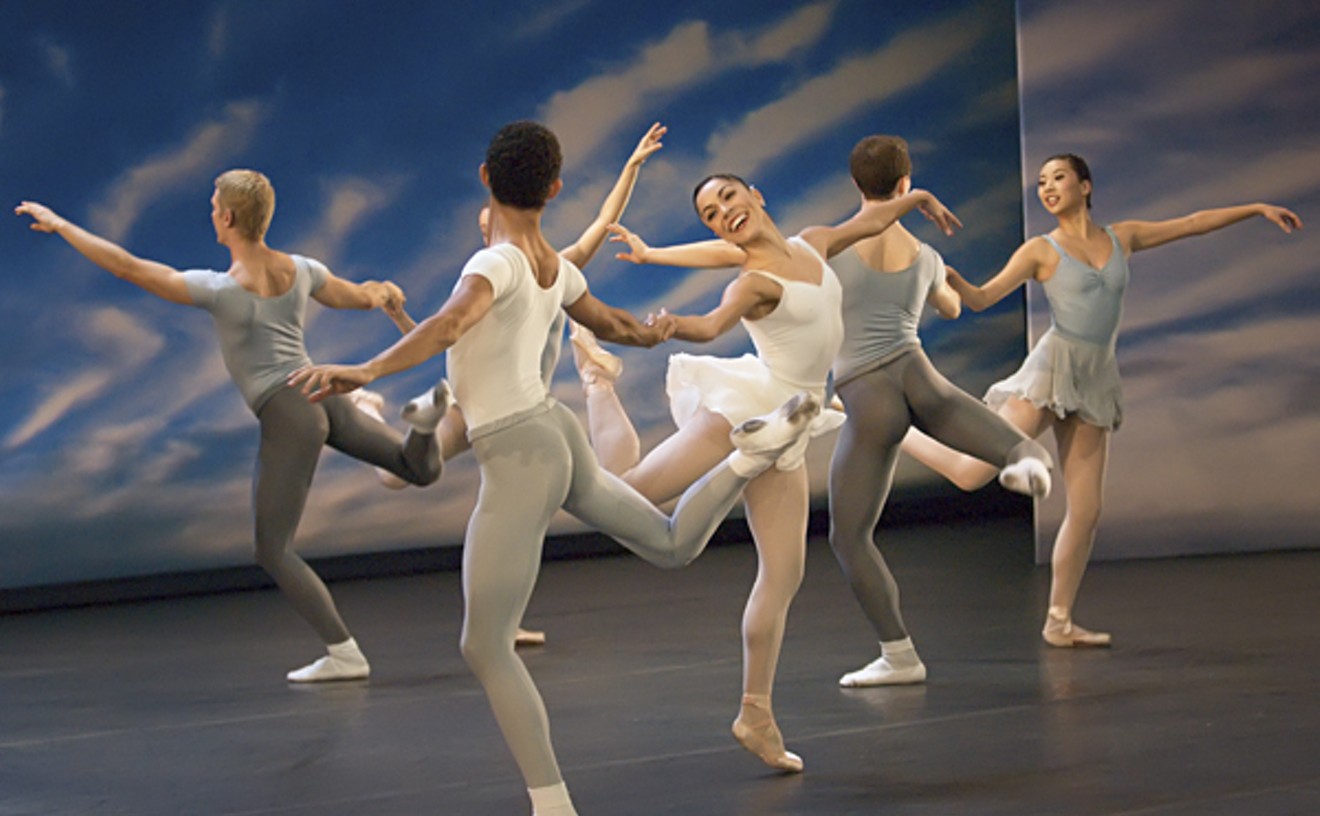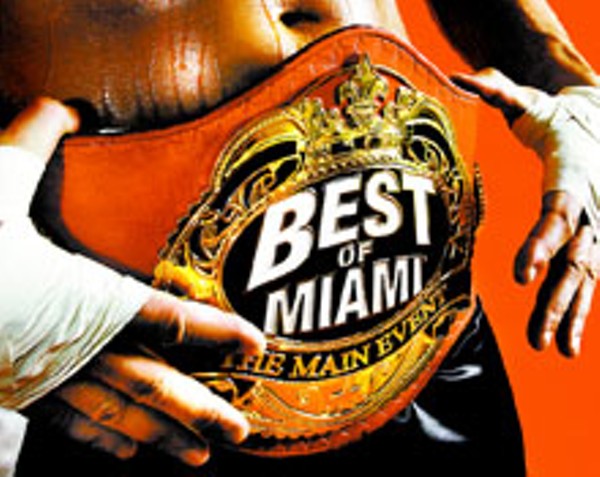Best Local Girl Made Good
Catherine Keener
Catherine Keener is associated with her indelible indie film roles as promiscuous, icy, neurotic urbanites settled firmly in New York City (or Los Angeles in the case of her most recent film, Friends with Money). It is shockingly pleasant to realize she not only is a native of Miami but also attended our city's estimable private Catholic school system. Indeed Keener is a graduate of Archbishop Coleman F. Carroll High School, which was named number one in the nation by the National Association of Roman Catholic Archdioceses in "Catholic Identity." Keener, who at age 46 seems just to be becoming a beauty, got her break in films with one line in the 1986 Demi Moore-Rob Lowe vehicle About Last Night .... After fooling around with small roles in big pictures, Keener hit her stride in 1995 at age 35 with prominent roles in art films. Living in Oblivion, directed by Tom DiCillo, and Walking and Talking, by Nicole Holofcener, gave Keener juicy, Manhattan-indie parts in which she inhabited characters who were by turns self-involved, vulnerable, caustic, and ultimately tough. In 1998, as the icy, bisexual, manipulative Terri in Neil LaBute's horrifying tragedy of yuppie manners, Your Friends and Neighbors, she cheats on her husband (played by Ben Stiller) with Nastassja Kinski and verbally emasculates Aaron Eckhart's misogynistic jock character. She does all of this without ever quite wiping the half-dreamy, half-bored look from her light blue eyes. Keener is an unconventional beauty, with uneven features and mousy, usually flat, brown hair. But in 2005 she landed back-to-back glamorous leading-lady-type roles, as the object of Steve Carell's dopey affection in The 40-Year-Old Virgin and as Harper Lee in Capote, for which she received an Academy Award nomination. Keener's emergence as a star who twinkled before shining speaks to her patience and discipline, which maybe has something to do with that Catholic school education.
Best Actress
Lauren Feldman in A Bad Friend
Memory brings its own surprises. Lauren Feldman's performance as the central character of A Bad Friend seemed at first just one fine jewel among many in a solid ensemble generously directed by the formidable Joseph Adler at GableStage. Jules Feiffer's play, not perfect but perfectly timed, goes beyond Old Left nostalgia to warn us all about the dangers of letting today's radical right play on people's fears and hatreds, redefining patriotism as blind evangelical zeal. The message is wise, even necessary, as we live through the most corrupt presidency since Richard Nixon's. For reasons both dramatic and political, Adler's GableStage did a brave and lovely thing in giving this play its local premiere. But it is the ineffably melancholy image of the delicate Feldman as Rose, a vulnerable young girl caught in the maelstrom of her family's and her country's ideological turmoil, that is still resounding long after the curtain's fall. To come on not particularly strong and yet make an indelible impression -- that is a gift.
Best Local Girl Gone Bad
Ana Veciana-Suarez
The Miami Herald columnist is best known for penning holier-than-thou tomes. She recently wrote about the perils lottery winners face when they accumulate sudden wealth. Other days she takes readers on mundane journeys through her life as a doting, caring mother frustrated by the FCAT and the anxieties of sending Junior off to college. Alas, we're still waiting for Ana to tap deeply into her ink-stained heart and give us her moralistic take on her recent pecadillo in federal court. This past January, U.S. Magistrate Judge Stephen Brown ordered Veciana-Suarez to serve eighteen months of probation, pay a $5000 fine, and serve 60 hours of community service after she was convicted on a contempt-of-court charge. During jury selection for a 2003 federal civil trial, she failed to disclose her father's criminal history. At the sentencing, Judge Brown highlighted Veciana-Suarez's columns focusing on values such as honesty, trust, and integrity as one of the reasons for the relatively harsh sentence.
Best Community Class
Citizens Police Academy
Do you want to know what it really takes to become a cop? If you live or work on Miami Beach, you can enroll in a twelve-week crash course and find out what the real CSI unit does (graphic crime scene photos included!), learn tactical and pursuit driving maneuvers that could save your life (pulling three 360s on a slick course is awesome!), experience the adrenaline of searching for a suspect in a darkened building (and shoot them with paint pellets!), and meet the K-9 unit (bark!). You can schedule a ride-along and spend a midnight shift on patrol (more doughnuts and coffee, please!). They will even provide you with dinner before each class (excellent!). The CPA, a free course offered three times a year, just completed its 28th cycle, and counts more than 500 citizens as graduates. Recent graduate Jyrki Auvinen, front office manager of The Hotel of South Beach, signed up for the class because he works and lives on the Beach. "I wanted to have a better understanding of how our local police department operates," says Auvinen. "The course was not only very informative, but the officers who organized it made it also interesting and fun. I even ended up volunteering to be shot a few times with a simulation gun! Yes, it hurts." Once you complete the twelve-week course, you receive a certificate and a pin, and alumni are awarded with additional classes (get your concealed-weapons permit or spend a day with the medical examiner!), a holiday party, and an invitation to join the CPA board. You will meet some very cool cops who love what they do, and you will certainly have a new respect for those who put their lives on the line every day they step out on the street in that blue uniform. "Now that I have completed the course," Auvinen adds, "I not only have a better understanding of the work that these fine people do, but I also better understand how my actions -- or inactions -- can affect the outcome of a situation where they might be called upon."
Best King Mango Strutter
Amanda Force
Amanda has been a staple of Miami's counterculture fest, the King Mango Strut, for more than two decades. Whether it was as an absentee voter for Raul Martinez, carrying a "Never Too Dead to Vote" sign; a pedophile priest; or a cocaine flamingo, Force has brought much of the spunk that has made this parade so refreshing year after year. In 2005 the 54-year-old Force resurrected a particularly powerful yet irreverent bit. Dressed in a feather boa and a hoop skirt, she occasionally flashed the crowd, picking up her hem to reveal an Osama bin Laden dummy between her legs. A boy in a purple pimp costume trailed behind Force with a sign that stated, "I still know where Osama is hiding." Three years into the Iraq war, Force's commentary was both a sobering reminder of nationalistic failings and a damn funny gag.
Best Art Gallery
Dorsch Gallery

It's difficult to believe fifteen years have slipped by since Brook Dorsch hung his shingle over a drug store on the corner of Coral Way and Cuban Memorial Boulevard and rolled the dice on running an art space out of his tiny second-floor crib. One of the first DIY alternative joints at a time when the stodgy Gables scene reigned supreme, Dorsch shook Miami up with edgy offerings that introduced talented young locals to the public, clearing his living room of furniture and running a bar out of the hall between his kitchen and bathroom for his early openings. The risk-taker was also among the first to plant a flag in Wynwood in 2000 and has never looked back since opening his capacious digs. With more than 100 exhibits under his belt, Dorsch has gone from an early underground newbie to a cultural graybeard who's all about building community. From exhibits featuring stable stalwarts like Ralph Provisero, Kyle Trowbridge, Carolina Salazar, William Keddell, and Claudia Scalise; to hosting the stellar Sub-tropics Music Festival and concerts showcasing Arthur Doyle, Awesome New Republic, Iron and Wine, and Pong; to opening its doors for hurricane and tsunami relief benefits, the Dorsch Gallery has evolved into a rare local treasure that continues to shine by keeping it real.
- 5900 NW Second Ave., Miami, 33127 Map
- 305-576-1278
- emersondorsch.com
Best New Trend
Protesting
Living in a city fueled by flagrant materialism, conspicuous consumption, and a reputation for social if not outright physical violence has made cowards of us all. If you talk back to the cop who pulls you over for your skin color rather than your flickering taillight, you risk a beatdown. Speak up about the craven capitalism of your corporation, and you'll find yourself on unemployment with three sketchy roommates in a studio apartment. Yet a spirit of rebellion, one that has haunted Miami for decades, is taking corporeal form. People are overcoming fear and are speaking -- and stepping -- up. Students and janitors at the University of Miami in April staged strikes and sit-ins over low wages and lack of benefits for cleaning crews. During the same month, farm workers and their supporters congregated in Homestead to advocate for rights for illegal immigrants. And that issue brought out a rainbow of flags from different nations for similar actions on May 1. A sometimes strident yet effective brigade of homeowners in Coconut Grove has torpedoed plans for a Home Depot on Bird Avenue through a combination of speaking before the Miami City Commission, leafleting, and plastering fences and walls with "The Grove Says No" signage. Some of these people have all the Benjamins, but many, if not most, are of limited means and risk a great deal by making their minds known. Still, if Silence = Death, a lot fewer people in our town are on the doorstep than in years past.
Best Convention of the Past Year
Spa & Resort/Medical Spa Conference & Expo
Not since Ponce de Leon stumbled upon Saint Augustine have we been so close to discovering the Fountain of Youth. And if one judges a convention by the free stuff collected from vendors in the exhibition hall, this expo cannot be beat. Medical and spa professionals were introduced to the latest lotions, potions, and therapeutic laser and LED light treatments. Shoulders were rubbed with aromatherapy massage oils, feet were soaked in sudsy tubs, and skin was rejuvenated by microdermabrasion treatments -- all so the professionals can provide you with the best possible service. You are, after all, forking over some dough for a luxurious afternoon at the spa, and even bigger bucks are being spent on treatments to correct our damaged and aging skin. While some visitors complained about it being "like a million degrees outside" during this mid-September conference, attendees were treated to frozen margaritas and strawberry daiquiris as a calypso cover band provided musical entertainment at a late-afternoon cocktail reception. Everyone walked away with a parting gift: a giant bag packed with enough candles, body butter, vitamins, mineral salts, makeup, and supersoft socks to last until this year's expo.
Best Magic City Icon
Hialeah Racetrack
Standing vigilant in the heart of Hialeah is one of the county's oldest socialites, a lovely lady who has seen better days and grander parties but still endures proudly despite the ravages of time and neglect. The world-famous Hialeah Race Track opened in 1925 and was an immediate and long-lasting hit with polite society, royalty, and politicians. All of them, along with the two-dollar bettors, enjoyed top racing and beautiful surroundings. The main building was constructed in Masonry vernacular style with classical elements to remind race fans of European tracks. It was not only the place to be seen, but also the place to see the nation's only flock of breeding flamingos. Like Miami, the park was severely damaged by the 1926 hurricane. It was trimmed of a jai-alai fronton, amusement park, and greyhound track. But the horseracing was enough to catapult the track to the head of the pack nationally. It remained on the lips of every bookie until it was finally shuttered in 2001. Despite the occasional chatter about a new use for the park, its eligibility for designation as a national landmark threatens most comers (except perhaps the Miami Marlins). Unfortunately the track seems likely to end its days as a backdrop to weddings and quinceañeras -- a white elephant infested with pink flamingos, but a gorgeous one at that.
Best Dance Company
Miami City Ballet

Miami Beach is known for its beaches, clubs, tycoons, and fashionistas, but it should also be thought of for ballet. The Beach is home to one of the nation's top ballet companies. Magic City balletomanes got lucky in 1986 when dancer Edward Villella became the troupe's founding artistic director. Under Villella's leadership, the little company has grown into a giant: 47 dancers, more than 70 annual performances in South Florida, a thriving ballet school, and a reputation for innovative dance. Classics such as George Balanchine's The Nutcracker and Giselle are regularly performed. But the Miami City Ballet also performs contemporary works by choreographers like Twyla Tharp and Lynne Taylor-Corbett. Beginning this fall, ballet lovers can enjoy pas de deux in the Miami Performing Arts Center. And one of the nicest things for dance lovers is the theater used for the company's contemporary performances: the Lynn and Louis Wolfson II Theatre, an intimate 200-seat space in Miami Beach where no view is a bad one. Individual ticket prices range from $19.95 to $105.
- 2200 Liberty Ave., Miami Beach, 33139 Map
- 305-929-7000
- www.miamicityballet.org





